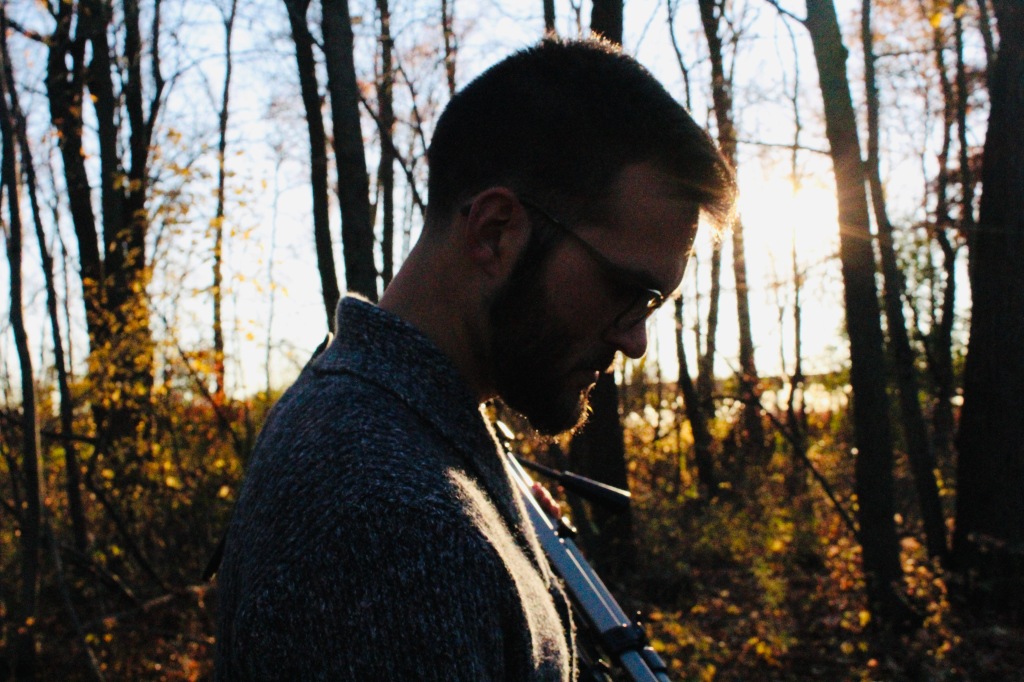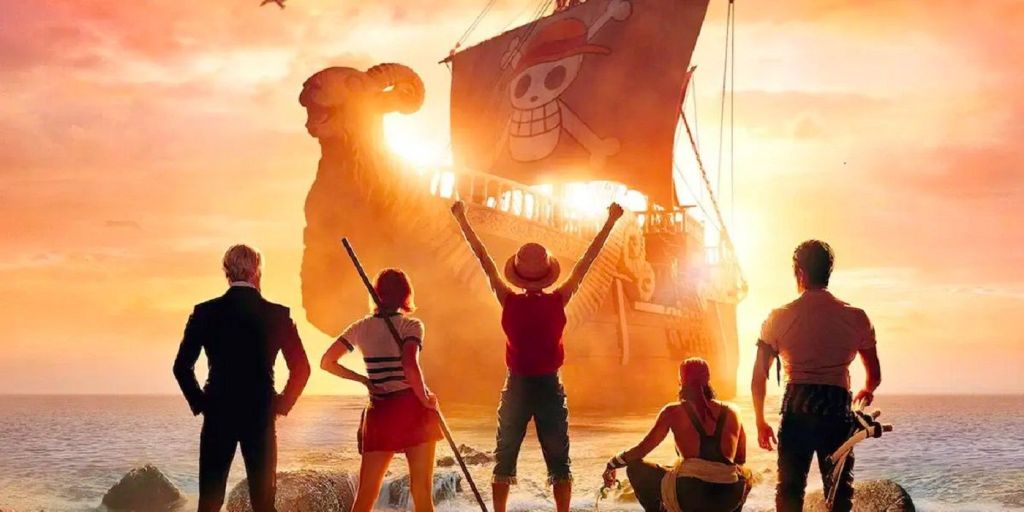One Piece is a 2023 fantasy adventure Netflix streaming series based on the manga series of the same name by Eiichiro Oda.
I’m not a huge anime fan. I’ve watched some of the “essentials,” like Cowboy Bebop in the English dub, and One Punch Man, season 1 with captions. I made it through the first half of Death Note before losing interest. I’ve also had the distinct “joy” of watching a few seasons of Sword Art Online.
Something that strikes me about the first two is that they are far from being serious shows. Yes, Cowboy Bebop is pretty depressing and introspective, but it still has a whole episode where they battle a monster alien creature that evolved from old leftovers in their fridge. There is still a recurring trio of gambling old men that somehow pops up in strange corners of the solar system every third episode. One of the main characters is an androgenous computer genius who uses cartoons and Pac-Men to hack into computer systems. One Punch Man has a wacky world, parodying both the Superhero genre, and the power-levels and insane antics of anime and manga.
In both of these, the worlds are crazy. They aren’t necessarily taken too seriously.
The characters, however, always are. That is what sets these anime apart, I think. Their worlds can be absolutely insane, but the characters are still consistent, realistic people, with hopes and dreams and arcs. You laugh with the characters, but rarely laugh at the characters.
One Piece Succeeds
One Piece is a new live-action adaption of one of the most famous mangas of the past 30 years. Netflix has had a poor track record of live-action adapting manga or anime so far. The Death Note adaption was lambasted. Cowboy Bebop was so hated that though the story was incomplete, they instantly canceled the second season.
Yet somehow, this new One Piece show is taking rave reviews, from both critics and fans of the manga alike. It’s being praised for fidelity to the source material. It adapts the first arc of the Manga pretty much one-to-one, with an eye toward future arcs. The action scenes are unique and inventive, taking the craze of the manga and the character’s abilities and bringing them to life. The production design is praised for adapting such a strange world, a hodgepodge of 1600s piracy, 1940s Navy, 1800s elegance and class, and 1970s neon.
Certainly, all these contributed to its success. But I’ve never read the source material. I don’t have anything riding on its success or not. Unique actions scenes and good production can get you so far, but in the end, there’s only one thing that will keep people coming. People stayed on the Marvel Cinematic Universe ride long after the world fell apart and the action stayed repetitive. Why?
Why the Unique Success?
The success in One Piece comes from taking characters seriously.
Yes, we laugh when the main character, Monkey D. Luffy, bumbles his way into tight spots. We giggle when there’s a pirate clown who creates mad theatrical acts of death. Vice Admiral Garp chucks a cannonball at Luffy, and Luffy puffs up his rubber body to bounce it back at his ship. Zoro finds Helmeppo posing naked with his swords, and Zoro gives him an insane haircut and humiliates him. The Marines talk through telephone slugs with receivers for shells. There’s so much whacky fun in this show.
But when Luffy vows to protect his friends. Or when Usopp watches his mother die. Or when Zoro vows to become the best swordsman in the world while his best friend dies. Or when Sanji lies on an abandoned island with nothing but a small bag of food. Or when Nami runs away from the group.
The show isn’t laughing then.
The show doesn’t subvert, make fun of, or laugh at its characters. Yes, the characters are often hilarious, and the world is fun. But the characters live and move through the world as if it’s the only world they know. They don’t wink at the screen. They don’t say, “Wow, isn’t this crazy, audience!” There isn’t a joke waiting to subvert a character high point, like most infamously when Dr. Strange’s cape strokes him the first time he’s in full costume. These characters are taken seriously.
At the same time, these arcs aren’t necessarily that complex. They’re not really complicated. You don’t have to dig into subtext of dialogue to figure out what’s going on. That is what makes Cowboy Bebop an interesting show, piecing together every line of dialogue and every flash of an memory into a coherent and layered story. Not so much here. All of the characters literally put their boots on a barrel and tell each other what their dream, their primary motivation, is. That’s not exactly The Godfather.
But what it is, is a unique world where characters are taken seriously, even if the world isn’t serious. The characters are given clear, understandable arcs. They are arcs that hit home, putting characters through huge tragedies that shape and form them into who they are today. Then, they have to overcome personal baggage and take charge, buying into the adventure. They creatively solve difficult challenges. They grow on each other, break down barriers, and become close. It’s so enjoyable to see the dangers this group of fast friends goes through.
I feel like movies and shows like this have been rare the past decade. Finn, Rey, and Poe got barely any time to be a group of friends in the Star Wars sequel trilogy. They spent far more time apart than together and the group never felt cohesive the way the Original Trilogy did. Then, they try to tear apart Luke, subverting his character–and many others in the trilogy. Remember when the Republic just blew up in The Force Awakens with no fanfair? (Yes, I do think The Force Awakens is a bad movie).
Ant Man and the Wasp: Quantumania took Scott Lang as a joke and its world as a joke; “None of this makes any sense!” (Listen to the director’s commentary as MODOK dies. It’s honestly insulting.) But that problem continues back to Fat Thor in Avengers; Endgame. The seriousness and care taken with Iron Man and other Avengers has been missing since Avengers: Infinity War.
The Legend of Korra never gave any personality to its teen characters, as opposed to the Gaang in Avatar: The Last Airbender. While it took its world seriously, its crew never got off the ground, and no relationship is really formed between this supposed friends.
The Witcher show collapsed in on itself once it was revealed that Henry Cavill was having backstage fights with the production staff over changes they were making to the world, and the way they were discussing his character Geralt, making a joke of his role in the universe of the show.
Trying to be clever or smart, and refusing to take their own characters or even their worlds seriously, movies and shows have been spoiling their crews. How am I supposed to take this show seriously, even if the show isn’t serious, if the creators don’t? If they aren’t invested?
The creative team–the actors, the writers, the directors, the set designers, everybody–clearly were invested in this show. I think that is also what set this show apart from adaptions like Death Note or Cowboy Bebop. Everybody involved is invested in the show. While I haven’t seen the Netflix adaptions of those two, if I did, I believe they would be missing the ridiculous joy both of the original anime have, set against a backdrop of characters taken seriously. Without the investment, the whole thing feels flat. But the investment is real here, and it shows. I’m so happy that wider audiences and critics are picking up on it.
Worth the Watch
If One Piece wasn’t on your radar before, it should be now. The main crew is a joy to watch preciously because the talent behind the show is so invested. The world is a wonder to experience, with surprises around every corner. Yes, it’s not complicated. But it is so fun to just have focused, invested enjoyment. Good action scenes, a creative world, and most of all, characters that are taken seriously in the midst of the insanity. What’s not to love?

𝙷𝚒! 𝙼𝚢 𝚗𝚊𝚖𝚎 𝚒𝚜 𝙽𝚊𝚝𝚑𝚊𝚗. 𝙸’𝚖 𝚊 𝚐𝚛𝚊𝚍𝚞𝚊𝚝𝚎 𝚜𝚝𝚞𝚍𝚎𝚗𝚝 𝚠𝚑𝚘 𝚕𝚘𝚟𝚎𝚜 𝚜𝚝𝚘𝚛𝚢𝚝𝚎𝚕𝚕𝚒𝚗𝚐, 𝚕𝚎𝚊𝚛𝚗𝚒𝚗𝚐, 𝚊𝚗𝚍 𝚌𝚛𝚎𝚊𝚝𝚒𝚗𝚐, 𝚊𝚗𝚍 𝚊𝚕𝚜𝚘 𝚕𝚘𝚟𝚎𝚜 𝚝𝚘 𝚝𝚊𝚕𝚔 𝚊𝚋𝚘𝚞𝚝 𝚝𝚑𝚎𝚖 (𝚜𝚘𝚖𝚎 𝚠𝚘𝚞𝚕𝚍 𝚜𝚊𝚢 𝚝𝚘𝚘 𝚖𝚞𝚌𝚑!) 𝙵𝚘𝚕𝚕𝚘𝚠 𝚝𝚑𝚒𝚜 𝚋𝚕𝚘𝚐 𝚝𝚘 𝚜𝚎𝚎 𝚖𝚘𝚛𝚎 𝚌𝚘𝚗𝚝𝚎𝚗𝚝!


Leave a comment